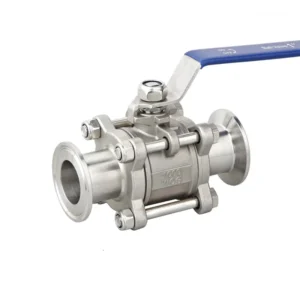Introduction:
Ball valves are indispensable components in plumbing and industrial systems, offering a straightforward yet efficient means of controlling the flow of fluids or gases. In this comprehensive guide, we’ll delve into the intricacies of ball valves, covering their functionality, advantages, limitations, and distinguishing features.

Ball Valves
1. What is a Ball Valve?
At its core, a ball valve is a type of quarter-turn valve that employs a pivoting ball with a drilled-through hole to regulate fluid or gas flow. This ingenious design allows for seamless operation, with the ball rotating to align or misalign with the flow direction, facilitating either the passage or cessation of fluid flow.
2. Understanding the Mechanics:
Operating a ball valve is remarkably simple. When the handle is positioned parallel to the valve body, it signifies an open valve, permitting fluid or gas to flow unrestricted. Conversely, rotating the handle to a perpendicular position indicates a closed valve, effectively halting the flow. This intuitive mechanism not only ensures ease of operation but also provides a clear visual cue of the valve’s status.
3. Advantages of Ball Valves:
The widespread adoption of ball valves can be attributed to their numerous advantages. Firstly, their robust construction ensures durability and longevity, even in demanding industrial environments. Additionally, ball valves exhibit exceptional reliability, maintaining their functionality even after prolonged periods of inactivity. Furthermore, their versatility extends to both shutoff and control applications, offering flexibility in system design. Moreover, the ability to adjust flow rates by partially opening or closing the valve enhances their utility in various scenarios.
4. Limitations to Consider:
While ball valves excel in many aspects, it’s crucial to acknowledge their limitations. Unlike gate and globe valves, ball valves may not provide the precision required for intricate throttling applications. This inherent limitation necessitates careful consideration of the specific requirements of each application to ensure optimal valve selection.
5. Distinguishing from Ball-Check Valves:
A common misconception is the conflation of ball valves with ball-check valves. It’s essential to differentiate between the two. While ball valves regulate flow by manual manipulation, ball-check valves function as one-way valves, preventing backflow and ensuring unidirectional flow.
Conclusion:
In conclusion, ball valves stand as stalwarts in the realm of fluid and gas control, offering a blend of simplicity, reliability, and versatility. By understanding their mechanics, advantages, and limitations, professionals can make informed decisions when integrating ball valves into plumbing or industrial systems. With their enduring appeal and widespread utility, ball valves continue to play a pivotal role in ensuring the seamless operation of diverse applications.
